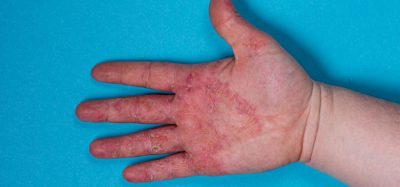Nanoparticle HIV vaccine shows potential in trial
Posted: 25 May 2023 | Catherine Eckford (European Pharmaceutical Review) | No comments yet
Positive first-in-human trial results have highlighted potential of a nanoparticle vaccine towards broadly neutralising against HIV.


Researchers have characterised robust T-cell responses in volunteers participating in a Phase I trial for a self-assembling nanoparticle HIV vaccine.
The results, published in Science Translational Medicine is a major step in the development of a vaccine for overcoming the HIV/AIDS epidemic.
“We were quite impressed that this vaccine candidate produced such a vigorous T-cell response in almost all trial participants who received the vaccine,” explained Dr Julie McElrath, PhD, co-senior author of the study and Senior Vice President and Director of Fred Hutch’s Vaccine and Infectious Disease Division.
“These results highlight the potential of this HIV-1 nanoparticle vaccine approach to induce the critical T-cell help needed for maturing antibodies toward the pathway of broadly neutralising against HIV”
“These results highlight the potential of this HIV-1 nanoparticle vaccine approach to induce the critical T-cell help needed for maturing antibodies toward the pathway of broadly neutralising against HIV,” Dr McElrath added.
Not only did the trial demonstrate strong CD4 T-cell responses against the virus, but it identified the T cell epitopes and found “several broadly immunogenic epitopes that might be useful for developing boosters and for other vaccines,” stated William Schief, PhD, co-senior author of the study and Executive Director of vaccine design for IAVI’s Neutralizing Antibody Center at Scripps Research and Professor at the Department of Immunology and Microbiology at Scripps Research.
Nanoparticle HIV vaccine Phase I trial results
The Phase I trial evaluated the safety and effectiveness of a nanoparticle HIV vaccine in healthy adult volunteers without HIV. There were 48 total enrollees: two groups with 18 vaccine and six placebo recipients per group. Participants were given two doses of the vaccine or placebo eight weeks apart.
Findings from the study include:
- Lymph node GC T follicular helper cells increased after vaccination compared to placebo
- Lumazine synthase protein, needed for self-assembly of the particle, also induced T-cell responses that can provide additional help to ultimately enhance efficacy in a sequential vaccine strategy
- Vaccine-specific CD4 T cells were polyfunctional and had diverse phenotypes
- LumSyn-specific CD8 T cells were highly polyfunctional and had a predominantly effector memory phenotype
- CD4 T-cell responses were driven by immunodominant epitopes with diverse and promiscuous HLA restriction
- CD8 T-cell responses to LumSyn were driven by HLA-A*02-restricted immunodominant epitopes B- and T-cell responses correlated within but not between LN and peripheral blood compartments.
Heterologous booster vaccines will still be needed to eventually produce VRC01-class broadly neutralising antibodies. Previous studies have demonstrated the ability to neutralise approximately 90 percent of HIV strains, according to Dr McElrath.
This study was funded by the Bill & Melinda Gates Foundation Collaboration for AIDS Vaccine Discovery; IAVI Neutralizing Antibody Center; National Institute of Allergy and Infectious Diseases; and Ragon Institute of MGH, MIT and Harvard.
Related topics
Antibodies, Biologics, Biopharmaceuticals, Data Analysis, Drug Development, Drug Safety, Immunisation, Nanoparticles, Research & Development (R&D), t-cells, Therapeutics, Vaccines, Viruses
Related organisations
Bill & Melinda Gates Foundation Collaboration for AIDS Vaccine Discovery, Harvard., IAVI Neutralizing Antibody Center, MIT, National Institute of Allergy and Infectious Diseases, Ragon Institute of MGH









